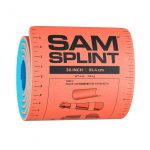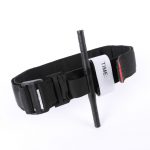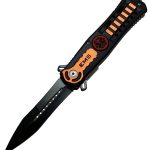In my last two posts, I detailed the serum sodium measurements in a hypothetical patient two ways. The first was a listing of daily values, and the second provided values obtained every six hours or so. It also showed the sodium supplementation that was ordered based on those values. (I’ve included the table at the bottom of this post)
What did you think? Did the extra determinations help you decide what, if any, treatment was needed? Did the therapies ordered help?
Here are my thoughts:
- Overall, there was not a huge or rapid decline in sodium values. Given the initial values, I would not have started a saline infusion on day 1, just watched a few daily values and the patients physical exam. The infusion only provided 3gm of salt per day, and the serum Na remained fairly stable for the first 3 days.
- There was a significant amount of intra-day variation seen on the six hour table. You need to know the normal “within-person ” variation for any lab test you order. If two assays on specimens drawn at the same time can vary by 5%, you must factor this in to your decision making. If the value is 3% lower than the previous draw, the difference could represent normal variation. Obtaining more frequent assays exacerbates the amount of variation you see and my be confusing.
- From day 5 to 6, the sodium appeared to be rising without any salt supplementation! But then a higher dose was given, and one of the intra-day values dropped to 124. What’s up with that? More variation?!
- Is the morbidity of frequent blood draws worth it if there is no clinical change in the patient’s exam? What morbidity, you ask? Sleep disturbances, with all the cascading problems like delirium, sundowning, administration of additional meds to compensate, and on and on. Unnecessary medication or interventions. Plus it does not promote patient or family satisfaction at all.
Bottom line: Unless your patient has a clinical problem that may deteriorate rapidly, serial lab determinations are probably not of much value. The example patient was many days out from a TBI with some extra-axial blood. So yes, he could develop hyponatremia, but it would have probably surfaced earlier. Know your within-person variability, which for sodium is roughly +2 meq. Is your new value within that limit? Then it is statistically the same as the first value unless you see a trend over several measurements. And as always, if you note a marked change in just one value, repeat it immediately before beginning any more drastic interventions.
Reference: Biological variation of laboratory analytes based on the 1999-2002 national health and nutrition examination survey. Natl Health Statistic Reports 21:March 1, 2010.
| Day/Time | Na | Treatment | NaCl per day |
| Day 1 18:30 | 131 | ||
| Day 1 22:54 | 132 | 0.9% NS @ 125/hr | 3G |
| Day 2 05:59 | 133 | continues | 3G |
| Day 2 12:19 | 129 | continues | |
| Day 2 17:50 | 129 | continues | |
| Day 3 07:18 | 127 | continues | |
| Day 3 12:09 | 127 | continues | |
| Day 3 17:58 | 126 | continues | |
| Day 3 23:53 | 126 | continues | |
| Day 4 07:45 | 125 | continues | |
| Day 4 11:38 | 122 | 2% NS @ 25/hr | 6G |
| Day 4 15:25 | 125 | continues | |
| Day 4 19:31 | 125 | continues | |
| Day 5 00:06 | 122 | continues | 6G |
| Day 5 04:04 | 126 | continues | |
| Day 5 08:01 | 122 | continues | |
| Day 5 11:50 | 132 | stop | |
| Day 5 16:14 | 126 | ||
| Day 5 19:26 | 127 | ||
| Day 6 00:20 | 129 | 9.2G | |
| Day 6 04:42 | 127 | 2% NS @ 40/hr | |
| Day 6 08:30 | 124 | continues | |
| Day 6 12:29 | 127 | stop | |
| Day 6 16:16 | 127 | Salt tabs 2G tid | |
| Day 6 20:28 | 132 | continues | |
| Day 7 05:22 | 134 | Salt tabs 2G qid | 8G |
| Day 7 12:33 | 135 | continues | |
| Day 8 07:02 | 131 | stop | None |
| Day 8 13:33 | 136 |





